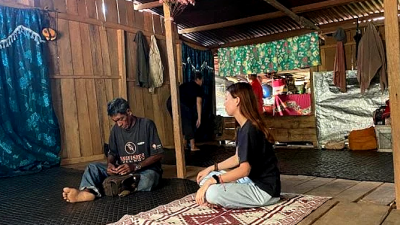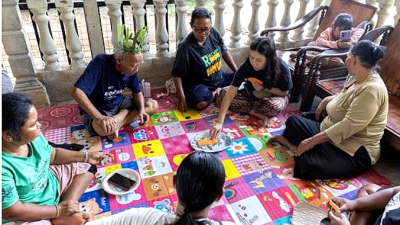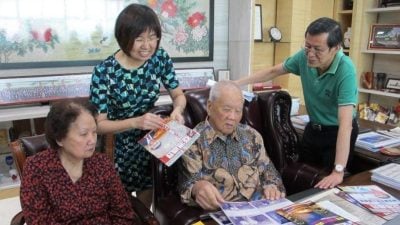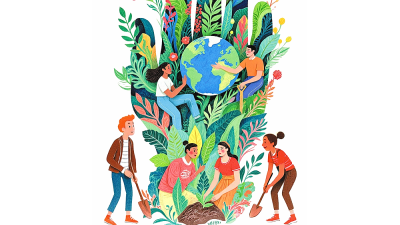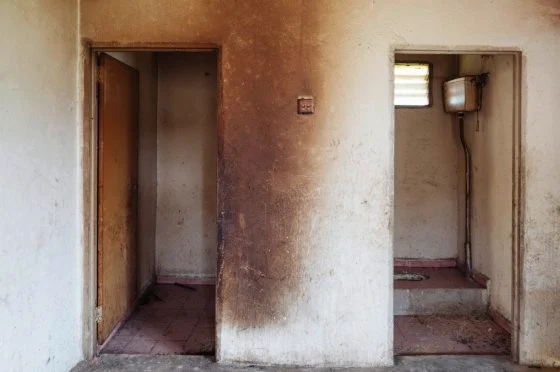
Many people hold a romanticised imagination of fieldworkers. They assume that fieldworkers can effortlessly “blend in like natives,” enjoy extraordinary folk experiences, and cultivate a sharp observation.
This kind of imagination largely comes from ethnographic writing—texts shaped by meticulously woven theories, vivid portrayals of “natives,” and Márquez-like storylines. They feel a little magical, almost like science fiction.
Bronisław Malinowski, one of the founding figures of modern anthropology, established a classic research model that includes long-term fieldwork, participant observation, language learning and understanding the world “from the native’s point of view.”
This model attracted generations of scholars striving to write an ethnography as remarkable as Argonauts of the Western Pacific. However, after Malinowski’s death, his wife published his private diary from the Trobriand Islands, and people suddenly realised that the seemingly romantic life of fieldwork was nothing more than an illusion crafted within the ivory tower.
A Diary in the Strict Sense of the Term laid bare the hidden emotional landscape of this “model fieldworker”—depression, frustration, loneliness, and discomfort—forcing the anthropological community to confront, for the first time, the emotions and struggles that lie behind fieldwork.
To be honest, I too once wrapped myself in that romanticism and plunged head-first into the world of fieldwork.
Even after gaining years of experience and visiting one Indigenous community after another, I would still, from time to time, find myself trapped in that helpless situation, like the Chinese idiom says, “I’ve eaten bitter lotus root but can’t complain”—suffering silently with no outlet.
If you were to open my field diary, you might expect pages filled with flashes of insight and cultural revelations—but no.
What I recorded most often was my frustration over not being able to find a toilet in the forest.
Blood and sweat in the field: The helplessness of female researchers
I still remember my first arrival at a Batek village in Kelantan, when a sudden stomach ache hit me. To my surprise, all the brick houses were only half-completed products of modern civilisation: toilets had pits but no clean water source.
In other words, villagers still had to go to the river to relieve themselves. Each family also had their own customary “invisible toilet” located along different parts of the river so that their waste would not meet.
Perhaps out of urban modesty, I have only ever managed to relieve myself once in such open woodland.
Most of the time, I would be on the verge of breaking down, trying my best to hold it until I returned to the foothill.
Take the Jah Hut community as an example: I once followed villagers deep into the mountains to study their male initiation circumcision ceremony.
When the urge to use the toilet struck, the boys were about to start their procession, visiting ancestral grave sites scattered across the area.
The nearest household toilet was a 30-minute drive away.
If I left to relieve myself, I would miss the heart of the ceremony. So, I followed a friend’s advice and performed a high-difficulty “toilet-holding technique”: squat down, press hard on the anus with your heel, and forcibly delay the moment of release to the very limit.
In the end, enduring sharp abdominal pain and breaking into cold sweat, I completed my field observation purely by willpower.
These embarrassing episodes gradually pushed me into an unhealthy habit—eating less. I thought that eating and drinking less would reduce the need for the toilet, but it only increased my risk of urinary tract infections.
Another harsh reality for female researchers is that we can control our appetite, but not our menstrual cycle. When menstruation arrives without warning, the discomfort intensifies.
Once, during my period, I needed to conduct fieldwork in an Orang Huluk village in Kahang, Johor. With no clean water source there, I stayed in Kluang and travelled two hours daily. On that day, I accidentally stained my pants and felt too embarrassed to ask any villager for help, so I had to drive all the way back to Kluang to change before rushing back into the forest to continue work.

Communal bathing in indigenous villages: A test of body techniques
By now, has your romantic fantasy of fieldwork crumbled?
The greater challenge of living in the forest is bathing in the river.
First, Malaysia has long suffered from rampant logging and soil erosion, turning many rivers into “teh tarik.”
Second, since private toilets are rare in Indigenous villages, communal bathing becomes a daily routine.
Almost every day, someone would ask me the same caring question: mau mandi sungai? (“want to bathe in the river?”)
Eventually, my bathing kit became fixed: a bucket, a ladle, toiletries, and a bag of clothes. Most importantly, the indispensable kemban—a piece of cloth wrapped around the body, the traditional women’s bathing garment in the Malay Archipelago.
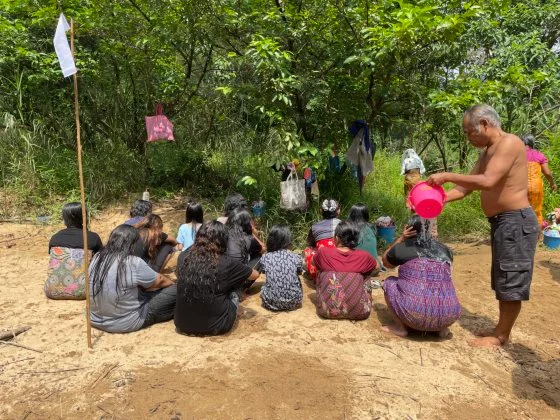
Wearing a kemban means exposing your shoulders, and since communal bathing is mixed-gender in many Indigenous communities, I often felt shy and uncomfortable bathing with a large group of people.
Faced with such unfamiliar bodily closeness, I was unsure how to relax, or how to socialise while half-naked.
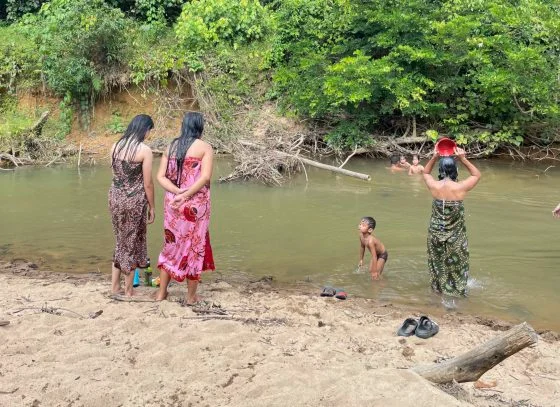
What about when menstruation comes? I can’t possibly let everyone soak in water stained by me.
Female researchers must learn additional techniques to cope with such “special periods.”
According to unwritten customs passed among Indigenous women, those of us who are “unclean” must choose downstream areas to bathe so as not to contaminate upstream users.
Or we wait until everyone else has finished before entering the water. And after bathing, figuring out how to change clothes in a forest with no partitions or screens becomes another challenge altogether.
From Japanese hot springs to the forest: How communal bathing builds friendship and understanding
Strangely enough, after experiencing Japanese public hot springs, I gained a new understanding of Indigenous communal bathing.
According to research in The Japanese Bath, public bathhouses (sento) in Japan are not merely places for washing; they are key sites for maintaining intimacy among family and community members. When people bathe naked together, a certain awareness emerges:
“We are all just human beings—doing our best to live as well as we can.”
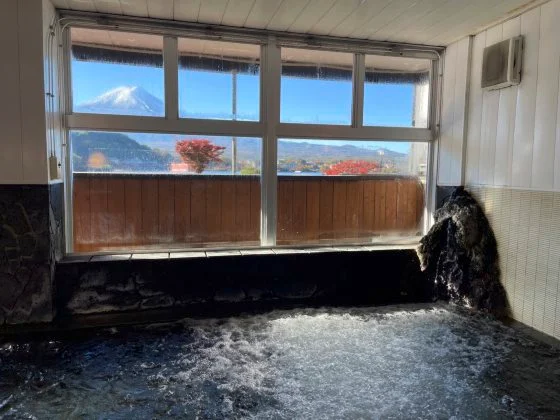
Many scholars also argue that nudity can temporarily dissolve class differences. In the bath, whether samurai, commoner, or merchant, social hierarchies fade, creating a temporary “space of public equality” that nurtures unique bonds.
Importantly, shame in Japanese society is contextual: shame doesn’t come from nudity itself, but from being naked in the wrong setting.
Thus, in a bathhouse—an accepted context—nudity does not violate etiquette, and people intuitively follow the “don’t stare” rule.
The book also notes that in the West, bathing is primarily for cleaning the body; in Japan, it also purifies the soul.
Through the architectural technique of shakkei (borrowed scenery), bathhouses extend limited space toward distant mountains and sky, nourishing both body and spirit.
So what about Indigenous villages? Despite the discomfort and awkwardness of fieldwork without toilets, most of the friendships I treasure today were built during communal baths.
Perhaps true cultural understanding does not come from observation or interviews, but emerges naturally through shared bodily experiences. Only when we lower our guard can people cross that invisible boundary between one another.
More on the Echoes of the Forest
(Yi Ke Kuik is a Master’s student in Anthropology at National Taiwan University focusing on issues related to indigenous people in Peninsular Malaysia. Founder of myprojek04 photography initiative and writes for a column called Echoes from the Forest (山林珂普) in Sin Chew Daily, highlighting the photos and stories of indigenous people.)
ADVERTISEMENT
ADVERTISEMENT






